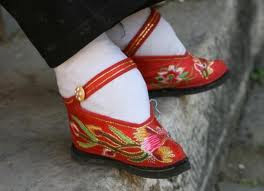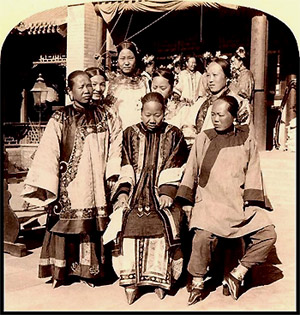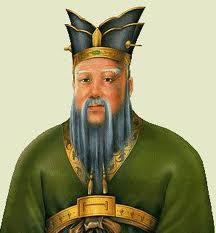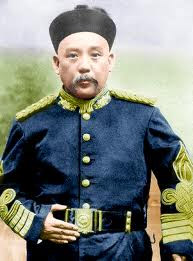by Ac. Krtashivananda
The movement for women’s liberation in China evolved simultaneously in the background of political struggle.
Revolt against Traditionalism
The three bonds of Confucianism – namely obedience to the ruler by his subjects, to the father by his sons and daughters, and to the husband by his wife were ultimately challenged both by men and women in the course of time, especially through the feminist movement.
The Taiping rebellion, which lasted from 1850 to 1864, was supposedly one of the world’s worst civil wars. This revolt arose in the southern provinces of China, where people were suffering from agrarian distress, unemployment and inflation. The rebels demanded the redistribution of land, the establishment of communal property, and equality of the sexes. Some of the founding members of the revolutionary force were Hakka women.
They demanded complete equality of men and women, communal property, abolition of prostitution and foot binding, and supported monogamy based on mutual love. Although they defeated the imperial army, the women’s aspirations were not fulfilled.
In the early twentieth century, China erupted in a revolt against the three cardinal principles of Confucianism. Amidst their attack on the inhumanness of Confucianism, the New Culturalists, as they called themselves, attacked all sorts of social practices reflective of gender discrimination, such as foot-binding, concubinage, arranged marriages and female chastity. Fighting the oppression of women became a recurring theme of the movement. The New Culturalists positioned that gender equality is a sign of modern society, and rendering the feminist movement is necessary for China a modernization.
It is worth noting that most New Culturalists were male, and under the influence of Western philosophers such as Jean-Jacques Rousseau, Karl Marx and Friedrich Engel. However, their effort for gender eqality did not change due to the immense impact these New Culturalists exerted on the Chinese women’s movement. A Chinese feminist movement emerged as the result of the inclusion of women in men’s pursuit of a Chinese Enlightenment. There emerged an increasing number of women’s publications, and large-scale organized women’s activism, such as campaigns to end foot-binding, and to promote education for women. The original membership of the Peking Alliance for the Womens Rights Movement were two thirds male. For a long time in China, men were the major supporters of women’s rights.
 As a result of the liberation movement, foot-binding, a practice which had existed in China for over a thousand years, was banned by the government of the New Republic of China that emerged in 1911 under the leadership of San Yat Sen. Finally, the general public came to realize the excruciating pain foot-binding inflicted upon women. Approximately eighty to ninety percent of the women in some big cities stopped binding their feet. Female education was also recognized and institutionalized by the republican government. Women’s schools, private or public, mushroomed during the first two decades of the twentieth century. Despite all these accomplishments, problems lingered. For example, the professions available to women were mostly limited to teaching and nursing. School systems were sex-segregated.
As a result of the liberation movement, foot-binding, a practice which had existed in China for over a thousand years, was banned by the government of the New Republic of China that emerged in 1911 under the leadership of San Yat Sen. Finally, the general public came to realize the excruciating pain foot-binding inflicted upon women. Approximately eighty to ninety percent of the women in some big cities stopped binding their feet. Female education was also recognized and institutionalized by the republican government. Women’s schools, private or public, mushroomed during the first two decades of the twentieth century. Despite all these accomplishments, problems lingered. For example, the professions available to women were mostly limited to teaching and nursing. School systems were sex-segregated.
In addition, women in rural China were hardly reached by the movement. The May Fourth era ended with  the advancement of the National Revolution advocated by the Kuomintang and the CCP. Feminists, a large portion of whom became CCP members, were called upon to subordinate their agenda to the larger party agenda and national interests. As a consequence, non-party feminist activities dropped dramatically after the late 1920s. Taken together, the State (e.g., political parties) had already made a deep impact in the initial stages of the Chinese women’s movement, even before the founding of the ACWF in 1949.
the advancement of the National Revolution advocated by the Kuomintang and the CCP. Feminists, a large portion of whom became CCP members, were called upon to subordinate their agenda to the larger party agenda and national interests. As a consequence, non-party feminist activities dropped dramatically after the late 1920s. Taken together, the State (e.g., political parties) had already made a deep impact in the initial stages of the Chinese women’s movement, even before the founding of the ACWF in 1949.
The People’s republic of China was established in 1949. In the spring of that year, the All China Democratic Women’s Federation (ACWF) was formed. Helen Snow commented in her book, Women in Modern China, that it was possibly the largest single mass organization and the most active one ever formed in the history of mankind. In 1956 it had 56 million membership; the CCP had only 11 millions.
It can be commented that the Chinese revolution remained faithful to the feminist principles with which it began, and to the women who participated in it. But in the course of years after the cultural revolution of 1966, China, like other countries, continued to be ruled by men.
The Chinese Women’s Federation Web-Page
http://www.women.org.cn/english/index.htm


